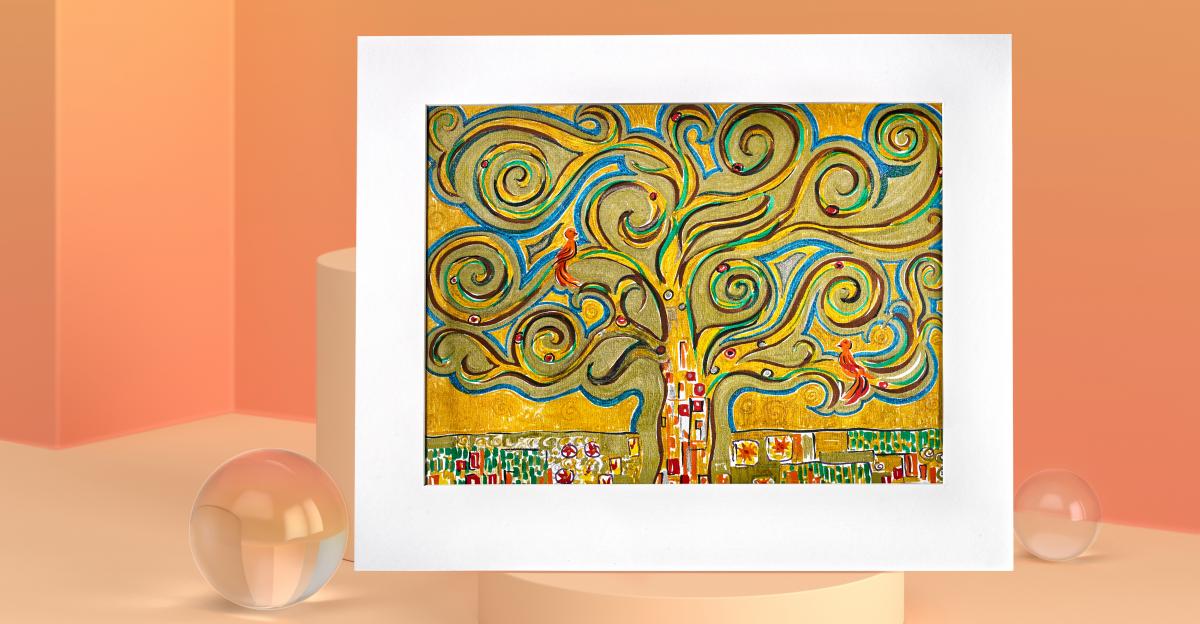Austrian painter Gustaf Klimt primarily painted the female figure, yet he’s best known for one of his landscapes, The Tree of Life. It was Klimt’s only landscape painting from his Golden Phase, during which he applied gold paint and gold leaves to his art. The Tree of Life was completed in 1905 and remains one of the most recognizable of Klimt’s works. This masterpiece is the inspiration behind this glitter and gold art lesson plan.
Tree of Life Symbolism
His subject, The Tree of Life, appears in many religious, mythological, and philosophical works, leading many to see the piece as symbolizing the connection between heaven, earth, and the underworld. The work features extensive gold, thought a heavenly color, and a blackbird, the symbol of death, which supports this interpretation.
However, critics have argued it could signify the complement between male and female or the marriage of wisdom and beauty. Despite differing interpretations, what is clear is that the painting encourages a thoughtful study of its meaning.
Gustav Klimt Gold & Glitter Inspiration
Influenced by Japanese art and methods, Klimt used shapes, colors, and lines with extreme intentionality in his whimsical works. In our Glitter and Gold art lesson plan, students can explore his techniques and create their own Tree of Life.
Tree of Life: Glitter and Gold Lesson Plan
Includes step-by-step instructions, a complete materials list, and a photo of a finished piece. Suitable for grades 4 through 8.
Beginning with a sketch, students will use paintbrush pens, metallic markers, and glitter markers to trace various elements, experimenting with various strokes to achieve soft, flowing lines. They’ll add elements of color and detail, finally filling in their trees with glitter. Conclude your lesson by asking your students to share their interpretations of the tree. You may be surprised by their insight!






Leave a Reply